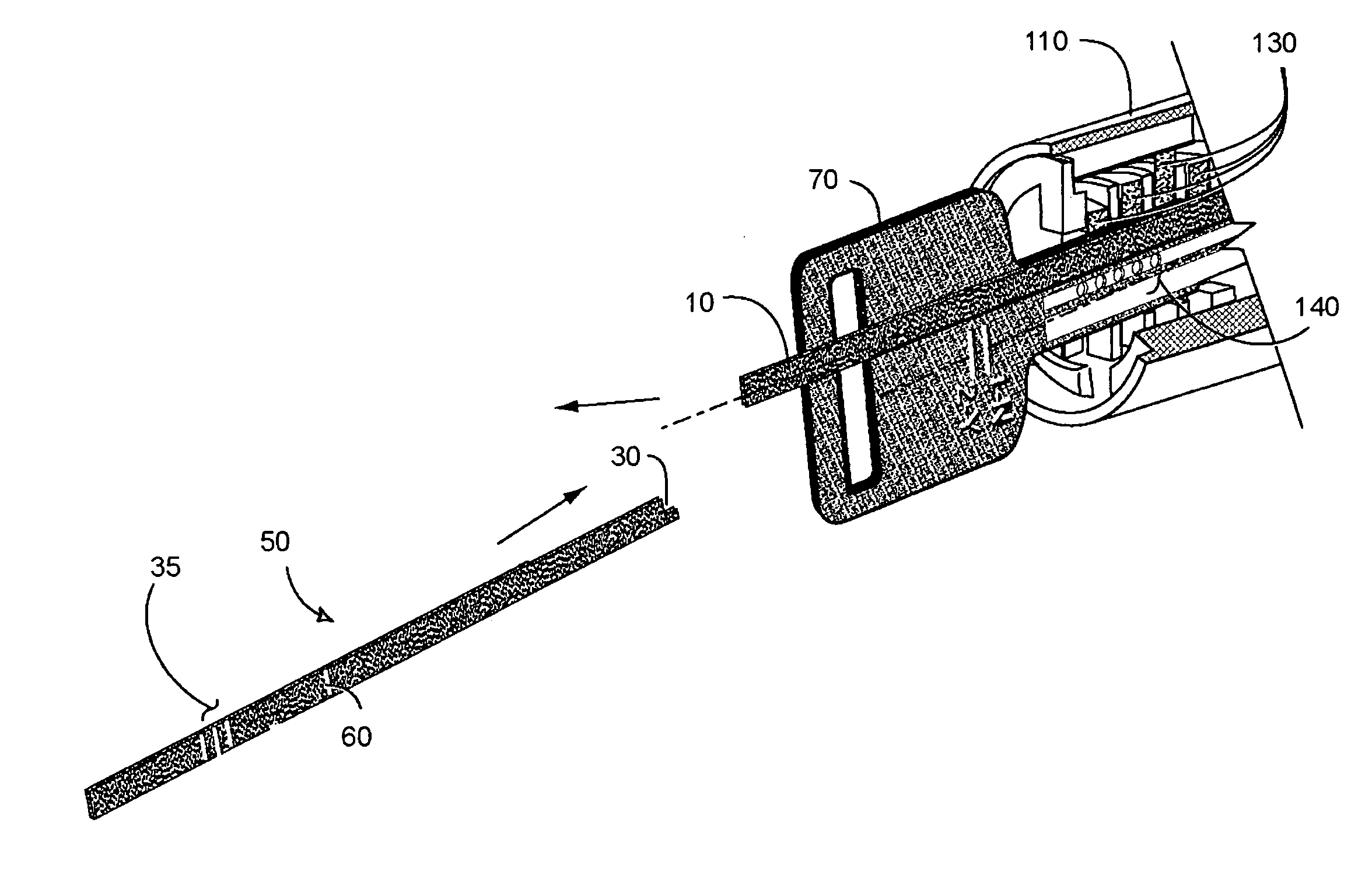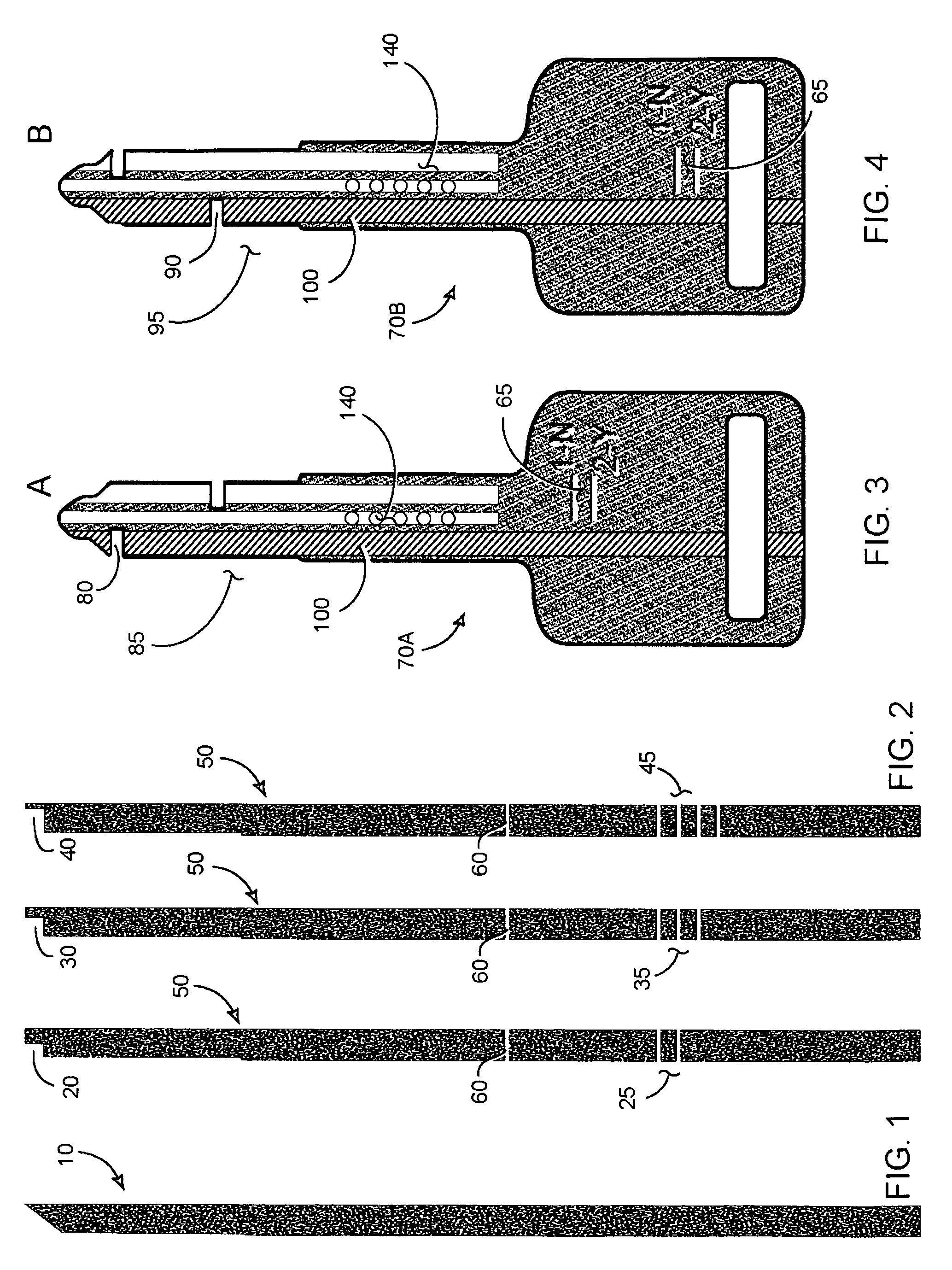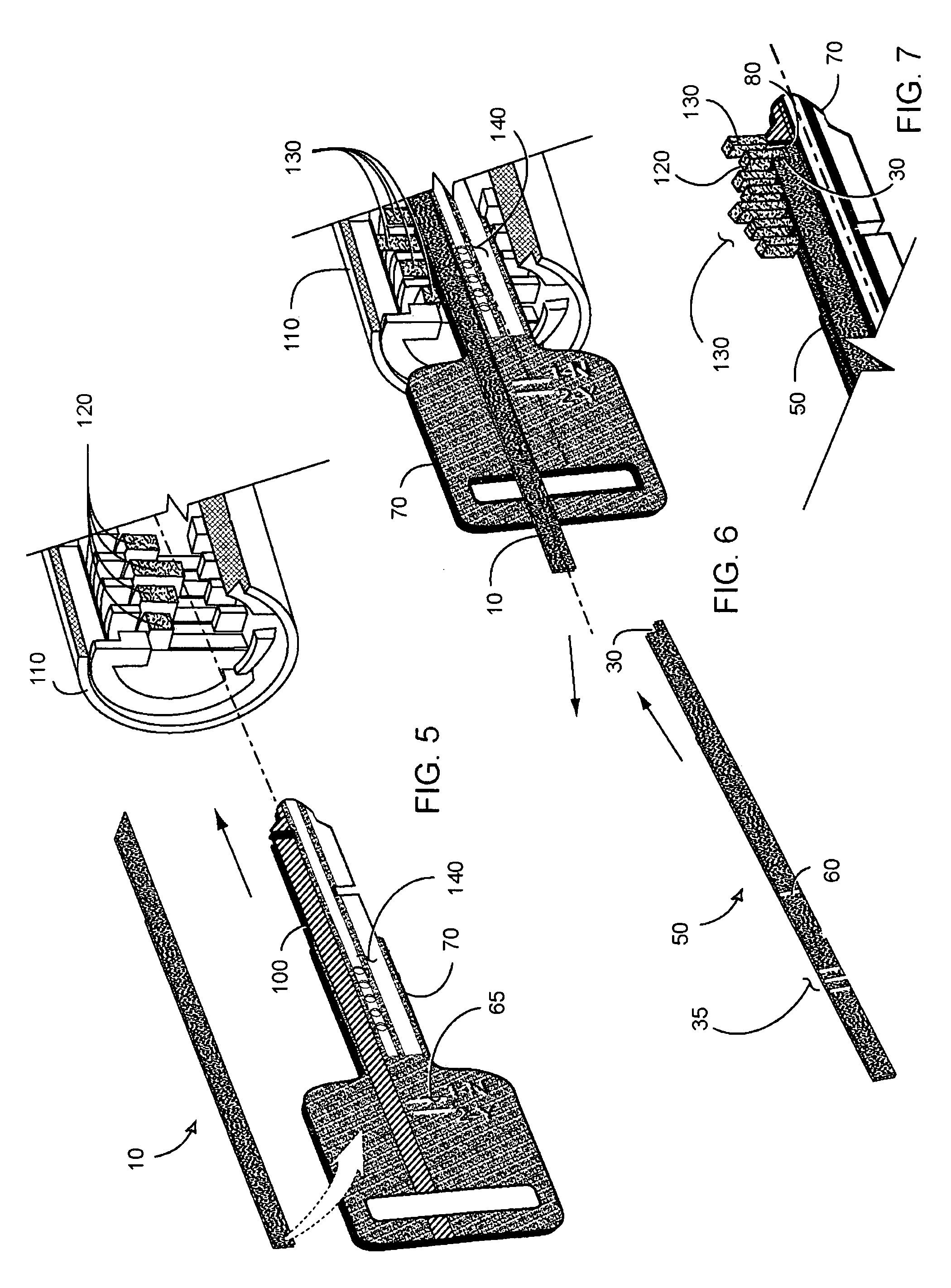Tool for deciphering the depths or cuts on a key from the lock itself
a key and depth technology, applied in the field of deciphering the depths or cuts can solve the problem of the lock getting trapped in the lock, and achieve the effect of solving the problem of the depth or cut on the key from the lock itsel
- Summary
- Abstract
- Description
- Claims
- Application Information
AI Technical Summary
Benefits of technology
Problems solved by technology
Method used
Image
Examples
Embodiment Construction
Number Description List
[0030]10 is a release and insertion tool.[0031]20 is a 2-depth gauge.[0032]25 is a 2-depth label or identifier.[0033]30 is a 3-depth gauge.[0034]35 is a 3-depth label or identifier.[0035]40 is a 4-depth gauge.[0036]45 is a 4-depth label or identifier.[0037]50 is a depth slot tool.[0038]60 is a depth slot tool measurement line.[0039]65 is a key measurement line pair, one for “NO” and one for “YES” for indicating the incorrect or the correct depth gauge depending upon the depth that the depth gauge is able to be inserted into a lock and whether or not it strikes or slides under a lock wafer in it's rest position.[0040]70 is a modified key blank.[0041]70A is a front side of a modified key blank.[0042]70B is a back side of the modified key blank.[0043]80 is a wafer slot for positioning at the inner wafers of a lock.[0044]85 is the active key side for the inner wafers of the lock.[0045]90 is a wafer slot for positioning at the outer wafers of the lock.[0046]95 is t...
PUM
 Login to View More
Login to View More Abstract
Description
Claims
Application Information
 Login to View More
Login to View More - R&D
- Intellectual Property
- Life Sciences
- Materials
- Tech Scout
- Unparalleled Data Quality
- Higher Quality Content
- 60% Fewer Hallucinations
Browse by: Latest US Patents, China's latest patents, Technical Efficacy Thesaurus, Application Domain, Technology Topic, Popular Technical Reports.
© 2025 PatSnap. All rights reserved.Legal|Privacy policy|Modern Slavery Act Transparency Statement|Sitemap|About US| Contact US: help@patsnap.com



